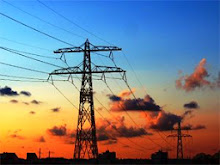Over-reliance on wind power could scupper government plans to cut carbon emissions by 2050, consultant Parsons Brinckerhoff warned this week.
The firm warned that extra back-up power generation capacity would be needed to pick up shortfalls in wind generated electricity during calm weather. The most cost effective and fast response solution would be gas fired power stations, but these generate high levels of CO2.
Its report Powering the Future models options for the UK’s energy supply. It finds that if Britain builds 30GW of distributed wind capacity, 10GW of additional fast response capacity would be needed to ensure reliability of supply.
This need is unlikely to be met by building new pumped storage facilities, given the high capital costs and limited site availability.
The report also warns that a major wind farm programme would also weaken the economic case for low carbon plant capable of responding to peaks in demand. Traditionally this capacity has been met by coal or gas.
High-efficiency plant with lower CO2 emissions but higher capital cost such as coal plants with carbon capture and storage only offers minimum life cost when used heavily. At lower usage levels, however, it is likely that lower-cost plant such as gas-fired power stations would be the preferred solution.
Long term benefits
The consultant said that a more “holistic” approach would be needed if Britain were to meet its target of cutting CO2 emissions by 80% of 1990 levels by 2050. “We need to deal with electricity quite carefully,” said Parsons Brinckerhoff deputy director of engineering and lead author of the report Paul Willson.
Willson said a broader approach to renewable energy would leave room for better benefits in the long term.
He cited the potential of “smart” electric vehicle infrastructure to help cope with energy surges caused by wind power. “You can have a great synergy,” he said. “So actually it works better if you defer this wind development.”
But right now, Willson said strong government leadership is essential for balanced action both within and between sectors.
Source: The New Civil Engineer



No comments:
Post a Comment